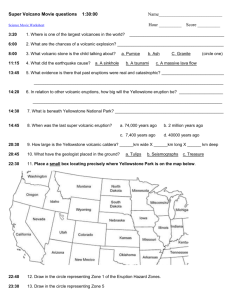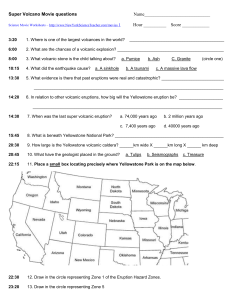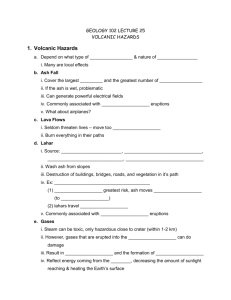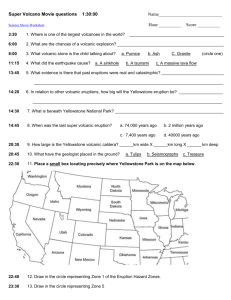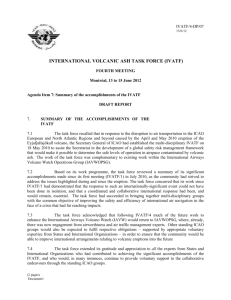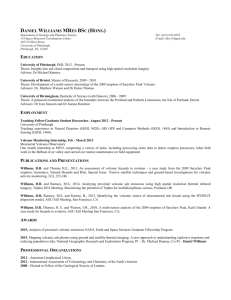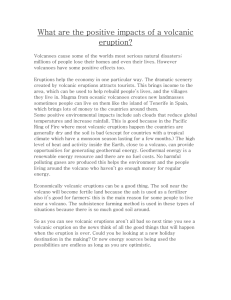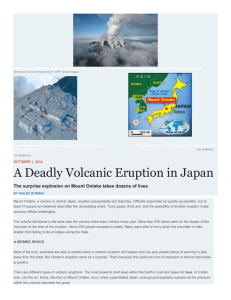Volcanic Ash and Airplanes: Why the Problem
advertisement
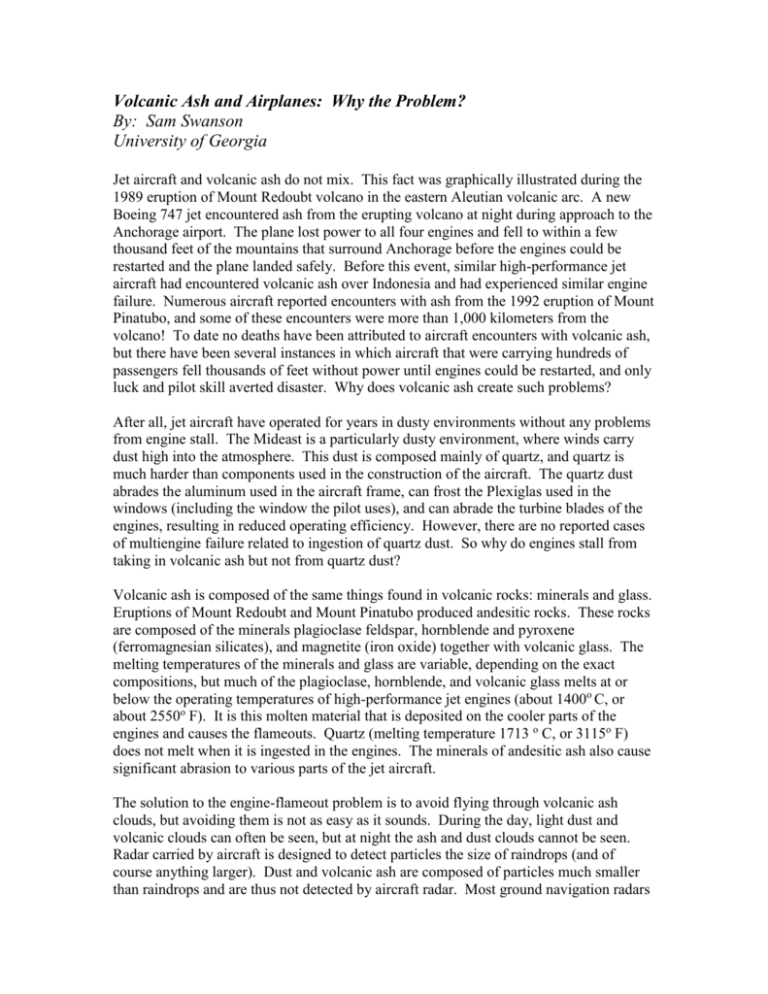
Volcanic Ash and Airplanes: Why the Problem? By: Sam Swanson University of Georgia Jet aircraft and volcanic ash do not mix. This fact was graphically illustrated during the 1989 eruption of Mount Redoubt volcano in the eastern Aleutian volcanic arc. A new Boeing 747 jet encountered ash from the erupting volcano at night during approach to the Anchorage airport. The plane lost power to all four engines and fell to within a few thousand feet of the mountains that surround Anchorage before the engines could be restarted and the plane landed safely. Before this event, similar high-performance jet aircraft had encountered volcanic ash over Indonesia and had experienced similar engine failure. Numerous aircraft reported encounters with ash from the 1992 eruption of Mount Pinatubo, and some of these encounters were more than 1,000 kilometers from the volcano! To date no deaths have been attributed to aircraft encounters with volcanic ash, but there have been several instances in which aircraft that were carrying hundreds of passengers fell thousands of feet without power until engines could be restarted, and only luck and pilot skill averted disaster. Why does volcanic ash create such problems? After all, jet aircraft have operated for years in dusty environments without any problems from engine stall. The Mideast is a particularly dusty environment, where winds carry dust high into the atmosphere. This dust is composed mainly of quartz, and quartz is much harder than components used in the construction of the aircraft. The quartz dust abrades the aluminum used in the aircraft frame, can frost the Plexiglas used in the windows (including the window the pilot uses), and can abrade the turbine blades of the engines, resulting in reduced operating efficiency. However, there are no reported cases of multiengine failure related to ingestion of quartz dust. So why do engines stall from taking in volcanic ash but not from quartz dust? Volcanic ash is composed of the same things found in volcanic rocks: minerals and glass. Eruptions of Mount Redoubt and Mount Pinatubo produced andesitic rocks. These rocks are composed of the minerals plagioclase feldspar, hornblende and pyroxene (ferromagnesian silicates), and magnetite (iron oxide) together with volcanic glass. The melting temperatures of the minerals and glass are variable, depending on the exact compositions, but much of the plagioclase, hornblende, and volcanic glass melts at or below the operating temperatures of high-performance jet engines (about 1400o C, or about 2550o F). It is this molten material that is deposited on the cooler parts of the engines and causes the flameouts. Quartz (melting temperature 1713 o C, or 3115o F) does not melt when it is ingested in the engines. The minerals of andesitic ash also cause significant abrasion to various parts of the jet aircraft. The solution to the engine-flameout problem is to avoid flying through volcanic ash clouds, but avoiding them is not as easy as it sounds. During the day, light dust and volcanic clouds can often be seen, but at night the ash and dust clouds cannot be seen. Radar carried by aircraft is designed to detect particles the size of raindrops (and of course anything larger). Dust and volcanic ash are composed of particles much smaller than raindrops and are thus not detected by aircraft radar. Most ground navigation radars have similar problems. Current procedure is to advise pilots as part of their preflight weather briefings of an erupting volcano along their flight path and the potential for encountering ash during their flight. Pilots have also been instructed on what procedures to follow (reverse course, do not add power to engines) if they encounter ash in flight. The subduction-related andesitic composite volcanoes are the most likely to inject ash to high altitudes during an eruption. Many of these volcanoes are concentrated above the subduction zones that surround the Pacific Ocean basin (the “Ring of Fire”). However, andesitic volcanoes are also found in the Mediterranean and Caribbean seas, so highperformance jet aircraft that travel in these areas must also take care to avoid volcanic ash during an eruption.
